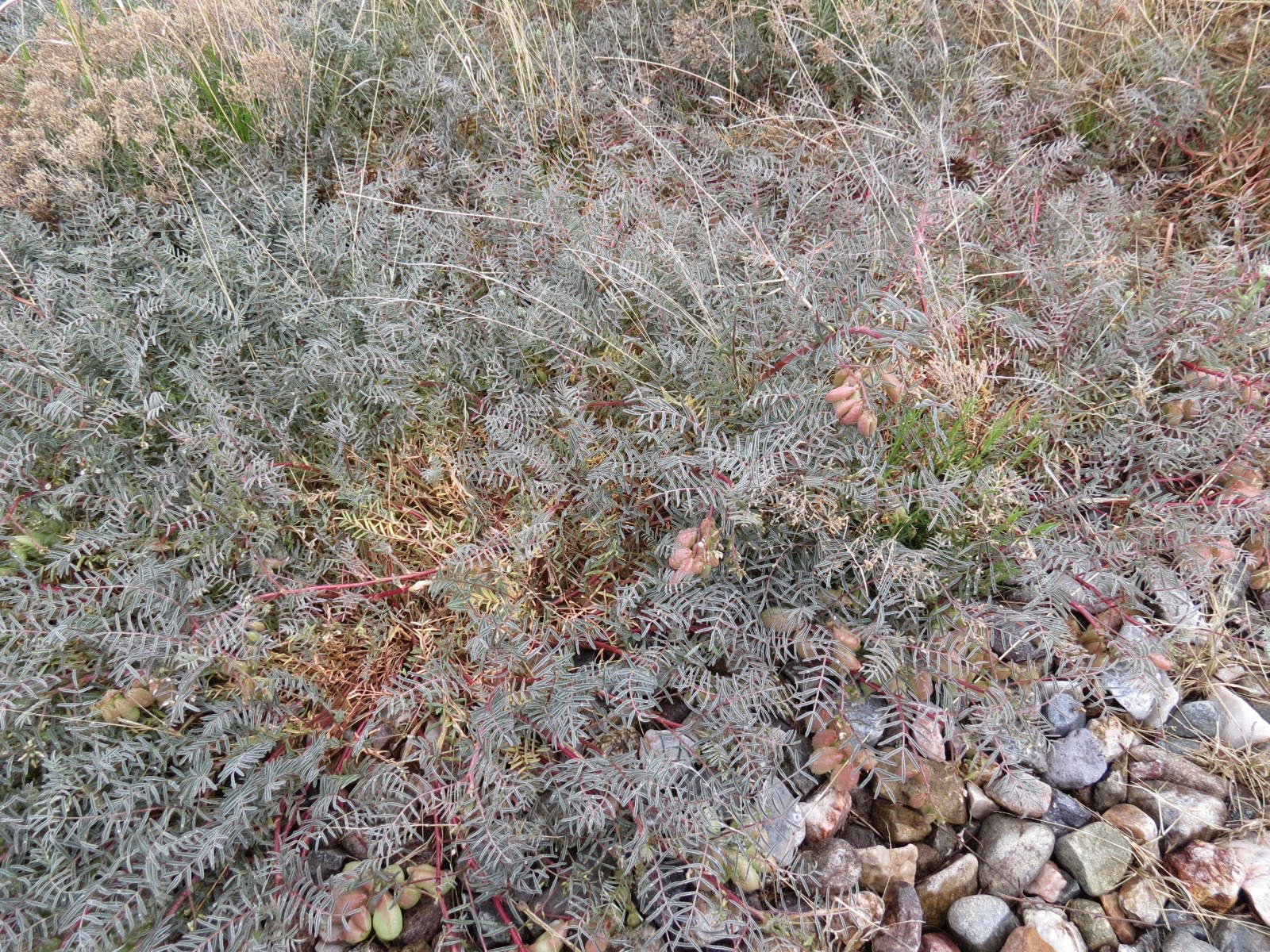The
sky after sunset on Friday was the color of globemallow. Littleleaf globemallow
is blooming now near the cabin. One of its common names is “sore-eye poppies,”
which is a clear warning and evidently the reason the Mexicans in baja
California call globemallows “plantas muy malas” (very bad plants).
The color, however, is welcome after the brown and grey of winter, relieved
only by the perennial bright green of creasote bush.
 Also
blooming in Dos Cabezas now are primroses, their happy faces brightening
mornings and evenings.
Also
blooming in Dos Cabezas now are primroses, their happy faces brightening
mornings and evenings.
The second plant above, showing a spent blossom, I believe is the stemless primrose.
Also, down along the dry wash can be seen the bright magenta
of Mexican vervain, and mixed in with grasses above the wash are the tiny but
vivid blue flowers of desert hyacinth and blue toadflax.
I was somewhat dismayed to learn that in addition to plantas muy malas, another represented near the cabin is locoweed, which sounds muy mala to me. Before knowing what they were, I had found the clumps of astralagus muy bonitas, with their dark green, pinnately compound leaves against the winter dust and gravel and their purple, pea-like blossoms that remind me of cow-vetch back in Michigan. Now the seed pods, green and not completely “ripe,” crack underfoot when stepped on. One book says of one variety that it is “highly toxic to sheep,” another book of another variety, “dangerous ... to livestock.” Una planta muy mala, no?
Then
there is corydalis, lots of corydalis, bright yellow, the first flower I saw
here in Dos Cabezas. Wouldn’t you know it “contains poisonous alkaloid”? Made
me almost afraid to look up the little pea-like blooms called Green’s lotus and
wiry lotus, but the books I consulted didn’t say anything terrible about those
yellow and yellow-orange flowers. Anyway, for what it’s worth, the cattle seem
educated enough in the ways of their territory to avoid poisonous plants, for
the most part, just as Sarah learned almost instantly to avoid cacti, thorny
bushes, and barbed wire.
And
here are flowering plants that remain a mystery to me. I include them here in
case anyone can identify them for me.
While
David has told me repeatedly that a “smart” phone would yield the
identification instantly, I was encouraged in my old camera-and-books method by
a recent article in the New York Review of Books, citing a study
showing that instantaneous answers do not generally constitute long-term
learning. Being able to identify an increasing number of plants on my own as we
drive or walk along is very satisfying to me; other people might not want those
names “cluttering up” their mental landscape. As with so many issues in life,
it comes down to a question of values.
This
past week we made an overnight trip, down to Patagonia (to see friends) and
Nogales. On
the way back north the next day, however, we left the highway to explore a road
along another dry riverbed, where trees were exploding into green and the
bright flowers of poppies and one of what botanist-author Janice Emily Bowers
calls DYCs (“damn yellow composites,” because there are so many of them to
distinguish among) formed rivers of bloom that made up for the lack of water.
Encouraged
by the loveliness we’d found, a bit further along the highway we popped for the
$10 day use fee to get into Patagonia Lake State Park and luxuriated for an
hour or two in the presence of real water! The lake, of course, would be a trickling
creek were it not for Man the Engineer. Does that surprise anyone? But how
calming, how soothing to the spirit is water! Perhaps our spirits are as great
a percentage of body as our bodies are of water?
And here is my mystery flower from Patagonia Lake --
We
were very happy to spend time with old friends, and the charm of shady,
tree-lined Patagonia was not lost on a couple of Midwesterners. In fact, I
think David fell head over heels in love with the place, as do many people from
Michigan. And I see it. I get it. Yet on our way home, when I caught my first
glimpse of the playa, I couldn’t help a big smile and sigh. The playa! I was
happy to shop for dinner at KT’s Market. The sight of the twin peaks of Dos
Cabezas said “home” to me, and out among the mesquite with Sarah, before dark
had fully enveloped the land, I was happy to see again the happy yellow
primroses that had been blooming when we left only thirty-six hours before.
Then
in the morning, the quiet of the ghost town, with only the occasional car or
truck-and-horse-trailer passing on the highway, headed for Chiricahua, felt
familiar, reassuring, and peaceful. Yes, I have bonded to my little ghost town
winter hide-out.































































